Determining Acceptable Evidences to Show Learners Understanding.pdf
0 likes46 views
This document discusses Bloom's Taxonomy and Anderson's revised version, which provide frameworks for classifying educational goals and objectives. It then provides examples of acceptable evidences for assessing learner understanding at each level of cognitive ability, from remembering to evaluating. These include tools like multiple choice tests, flashcards, essays, and projects. The conclusion emphasizes that Bloom's Taxonomy is useful for gaining insights into learner progress and developing teaching strategies matched to their abilities.
1 of 9
Download to read offline

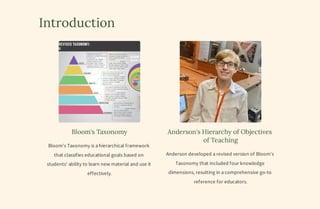


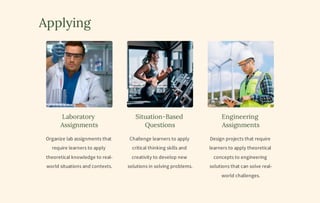




Recommended
Teaching for Academic Learning.pptx



Teaching for Academic Learning.pptxMaryAnneIsrael
╠²
The document discusses effective teaching practices including using clear instructional objectives, employing different teaching formats appropriately, demonstrating characteristics of effective teachers, avoiding negative effects of expectations, and understanding the teacher's varying roles in direct instruction versus constructivist approaches. Specifically, it recommends using objectives to guide lessons and assessments, using lectures for content delivery while seatwork and homework provide practice, employing questioning and discussion to develop higher-order thinking, and adapting instruction based on an understanding of how expectations can influence student learning and performance.Instructional Development Models



Instructional Development ModelsArgie Mabag
╠²
The instructional development models document the complex process educators use to develop instructional solutions. Models help convey meaning about relationships and processes to facilitate study. The ASSURE model is a procedural guide that integrates technology into teaching. It includes six steps: 1) analyze learners, 2) state objectives, 3) select media and materials, 4) utilize materials, 5) require participation, and 6) evaluate and revise. The concrete-abstract continuum model positions instructional methods on a scale from concrete to abstract based on the level of engagement and active learning.Instructional development amirppt.



Instructional development amirppt.Argie Mabag
╠²
Instructional development models address challenges in producing teaching materials and strategies, even in difficult environments. These models convey the complex process of instructional design graphically and through text. One such model is the teaching-learning cycle, which involves diagnosing student needs, setting objectives, selecting content, preparing lessons, and guiding activities. The cycle aims to motivate students and effectively support their learning.Instructional Development Models



Instructional Development ModelsArgie Mabag
╠²
The instructional development models document the complex process educators use to develop instructional solutions. Models help convey meaning of complex concepts through relationships and processes. The ASSURE model is a procedural guide that integrates technology into teaching. It includes six steps: analyze learners, state objectives, select materials, utilize materials, require participation, and evaluate. The concrete-abstract continuum model positions instructional methods on a scale from concrete to abstract based on the level of learner participation and sensory experience.Physical Education and Health: Instructional Models



Physical Education and Health: Instructional ModelsMariaLhourdesRebudan
╠²
ADDIE Model
Robert Gagne's Nine Event
Kolb's ModelCh 4 PowerPoint



Ch 4 PowerPointMarina
╠²
The document describes the stages of the Direct Instruction model of teaching. It consists of the following stages: focus activity, stating the objective and providing rationale, content presentation and modeling, checking for understanding, guided practice, independent practice, closure, and mass and distributed practice. Research has found Direct Instruction to be effective at teaching basic skills in reading and math. It is based on behaviorist learning theory and information processing models of learning.ID Case Study: Theories & Lessons



ID Case Study: Theories & LessonsAthena Rayne Anderson
╠²
The document discusses different learning theories and instructional design theories. It provides examples of when behaviorism, cognitivism, and constructivism are beneficial for learners. It also analyzes the strengths and limitations of several design theories: backwards design, Gagne's events of instruction, and teaching for understanding. The document concludes that backwards design is the most appropriate theory for the author's instructional setting because it allows flexibility, leads to alignment among objectives and assessments, and has been successfully used in the past.samplelesson plan



samplelesson planGemma Gabani
╠²
The document discusses several effective teaching strategies for helping struggling learners master new academic skills. It outlines 9 strategies: instructional matching, scaffolding, breaking skills into steps, modeling and demonstration, feedback, practice and drilling, student talk-through activities, periodic review, and progress monitoring. It also discusses project-based learning and its essential elements: significant content, 21st century skills, in-depth inquiry, driving question, need to know, student voice and choice, critique and revision, and public audience. Finally, it outlines and discusses several prominent teaching strategies used in higher education, including lecture, case method, discussion, active learning, cooperative learning, integrating technology, and distance learning.How to create evidence of rigor rubric.pdf



How to create evidence of rigor rubric.pdfMarquiseHines
╠²
The document describes rubrics for evaluating lessons based on rigor, relevance, and student engagement. It includes rubrics for assessing the level of thoughtfulness in student work, the use of high-level questioning, academic discussion, meaningful and authentic work, and real-world connections. Each rubric has three levels - beginning, developing and meeting - to describe the extent lessons incorporate these elements at different stages.Gernal methods of teaching (Gmt) solved paper 2023.pdf



Gernal methods of teaching (Gmt) solved paper 2023.pdfMehdiHassan53
╠²
Fully Solved paper of gernal methods of teaching (GMT ) solved paper 2023.pdf
2023 sloved paper code: edu 316Designing and conducting formative evaluations



Designing and conducting formative evaluationsKobieJones1
╠²
This document discusses formative evaluation, which is used to test instructional materials during the design process. It describes conducting one-on-one evaluations with learners to identify errors and get feedback. Next, small group evaluations are used to test revisions and see if learners can use the materials independently. Field trials then test the materials in the intended environment. Specialists in content, learning, and the target population provide reviews. Data is collected during field trials to evaluate clarity, impact, and feasibility. Formative evaluation helps ensure instructional materials meet their objectives before finalization.Improved instructional practices



Improved instructional practicesPrincess Lalwani
╠²
The document discusses several instructional approaches and methodologies including modular instruction, discovery approach, conceptual approach, process approach, inquiry approach, and others. Modular instruction allows students to learn at their own pace. The discovery approach guides students to discover concepts through observation and questioning. The conceptual approach focuses on big ideas rather than isolated topics. The process approach emphasizes learning by doing. The inquiry approach involves seeking knowledge through research and investigation. Other methodologies discussed include whole group instruction, role playing, simulations, and small group work.Constructivism533



Constructivism533Carla Piper
╠²
The document discusses constructivism and project-based learning as approaches for hands-on learning. Constructivism involves students actively constructing knowledge through experiences facilitated by the teacher. Project-based learning allows students to solve complex, realistic problems through collaboration while developing cross-curricular skills. Rubrics are recommended for assessing student learning in project-based lessons by evaluating various criteria such as content, process, and timeline.Constructivism533



Constructivism533Carla Piper
╠²
Constructivism is a learning theory where knowledge is constructed by learners through experiences and interactions with teachers and peers. The teacher acts as a facilitator by providing open-ended questions, opportunities for collaboration, and authentic learning experiences that allow students to build upon their existing knowledge through problem-solving. Assessment focuses on higher-order thinking skills rather than factual recall through methods like performance-based assessments and rubrics.Ubd Edi Soh Presentation



Ubd Edi Soh PresentationAna Banos
╠²
The document discusses the backward design process for curriculum planning outlined in Understanding by Design (UbD). It describes the three stages as: 1) identifying desired learning outcomes, 2) determining acceptable evidence of student understanding, and 3) planning learning experiences and instruction. The framework emphasizes starting with the end goal of student learning and understanding in mind to ensure curriculum and assessments are properly aligned.How do you effectively engage your student in



How do you effectively engage your student inArmand Ma├▒ibo
╠²
The document discusses strategies for effectively engaging students in learning. It identifies three categories of instructional strategies: activating strategies to activate prior knowledge; cognitive strategies to promote higher-level thinking; and summarizing strategies to help students retain knowledge. Several examples are provided for each category, such as carousel brainstorming, RAFT, and exit slips. The strategies involve active learning techniques like movement, discussion, graphic organizers, and reflective activities to engage students in the learning process.Principles and Strategies of Teaching



Principles and Strategies of TeachingDivine Ampongol
╠²
This document outlines five principles for effective teaching: 1) clear communication with students, 2) a stimulating learning environment, 3) in-depth knowledge of the subject area, 4) effective assessment and feedback, and 5) evaluation and improvement of teaching practices. For each principle, it lists best practices for teachers to follow. It also discusses goals for student learning in mathematics, including knowledge and skills, understanding, and problem solving. Finally, it outlines strategies for teaching understanding and problem solving skills in mathematics.Questioning tips1



Questioning tips1Twynham School, Dorset, UK
╠²
A more detailed look at the role of questioning as a means of delivering high quality teaching and learningTap exemplary goals



Tap exemplary goalsMaria BREEN
╠²
The document outlines standards and objectives for effective classroom instruction and student learning. It provides descriptions for several key areas including: clearly communicating learning objectives aligned to standards, motivating students through meaningful content, using effective instructional strategies like modeling and examples, maintaining an organized lesson structure with brisk pacing, using engaging activities and materials to support objectives, employing high-quality questioning techniques, providing academically focused feedback, grouping students strategically, demonstrating teacher content and student knowledge, teaching different types of thinking, incorporating problem-solving activities, aligning measurable goals and assessments to standards, assigning student work that requires higher-order skills, and managing student behavior in a well-organized supportive classroom environment.Blooms Taxonomy of Educational Objectives.pptx



Blooms Taxonomy of Educational Objectives.pptxSATINDER DHILLON
╠²
BloomŌĆÖs Taxonomy is a classification of learning objectives within education.
It is named after Benjamin Bloom.
He edited the standard text ŌĆśTaxonomy of Educatonal Objectives: The Classification of Educational GoalsŌĆÖ.
1948: Benjamin Bloom and a group of
psychologists namely Krath Wehl, Masia and
Simpson studied classroom activities and
goals teachers has while planning these
activities.
Through this study three domains were
concluded:
Cognitive Domain
Affective Domain
╠²Psychomotor Domain
Problem Based Learning



Problem Based LearningMarygrace Cagungun
╠²
This document discusses problem-based learning and project-based learning. It explains that problem-based learning is a student-centered approach where students learn by solving complex problems. It also describes the seven step process for problem-based learning. Project-based learning involves students investigating real-world problems and challenges. The key components of project-based learning are outlined, including learner-centered environment, collaboration, authentic tasks, and innovative assessment. Benefits of both approaches include increased motivation, development of critical thinking skills, and preparation for lifelong learning.Models associated with subject matter/discipline



Models associated with subject matter/disciplineCatherine Matias
╠²
The document discusses various models of discipline and teaching methods. It describes the Kounin model which focuses on the teacher's behavior and techniques like "withitness" and "overlapping" to address misbehavior. It also outlines Skinner's behavior modification model using positive and negative reinforcement. The Glasser model focuses on students taking responsibility for their behaviors. Other models discussed include Dreikur's mistaken goal model and Canter's assertive behavioral model. Teaching methods like lecture, discussion, questioning, viewing-listening, and the inquiry method are also summarized.Core 6 title 1



Core 6 title 1Melissa Mack
╠²
The document summarizes strategies for six Common Core instructional approaches: Reading for Meaning, Compare and Contrast, Inductive Learning, Circle of Knowledge, Write to Learn, and Vocabulary's CODE. Each approach is connected to Common Core standards and explained with examples of implementation in the classroom. Experts from a school district provide overviews of the strategies to achieve excellence with the Common Core.Ch. 8 developing an instructional strategy



Ch. 8 developing an instructional strategyEzraGray1
╠²
This chapter discusses developing instructional strategies that engage learners. It identifies five components of instructional strategies: pre-instructional activities, content presentation and guidance, learner participation, assessment, and follow-through. Each component considers how to motivate, present content, provide practice and feedback, evaluate learning, and facilitate transfer. Instructional strategies aim to support learners' internal cognitive processes by incorporating techniques like gaining attention, presenting objectives, and eliciting performance. Constructivist strategies emphasize reasoning, problem-solving, and situating learning in complex but relevant contexts.Active Learning Techniques: Overview, Benefits, Implementation And Challenges...



Active Learning Techniques: Overview, Benefits, Implementation And Challenges...Future Education Magazine
╠²
This document discusses active learning techniques as an alternative to traditional passive learning approaches. It explores the significance of active learning, which emphasizes student participation over passive absorption of information. The benefits include improved retention and understanding, enhanced critical thinking skills, increased motivation and engagement, and promotion of collaboration. Common active learning techniques are described, such as think-pair-share, case-based learning, flipped classroom, and interactive lectures. The document also addresses implementing active learning, assessing its effectiveness, and overcoming challenges like resistance to change, large class sizes, and time constraints.Differentiated Instruction and Effective Strategies



Differentiated Instruction and Effective StrategiesAntwuan Stinson
╠²
This document discusses various classroom instructional strategies and considerations for diverse learners. It provides over 20 instructional strategies for teachers, including scaffolding, think-tac-toe, tiered activities, and graphic organizers. It also covers key components of instructional design, such as gaining student attention, presenting content, and assessing performance. The document emphasizes matching instructional methods to student needs and abilities.20is



20isMildred Pon
╠²
The document provides a summary of 20 instructional strategies for helping students attain standards. It begins by outlining the goals of the instructional strategies guide, which are to create a positive learning environment and select strategies that support student learning of standards. The document then describes 9 researched strategies for improving student achievement, including identifying similarities and differences, summarizing and note taking, reinforcing effort and providing recognition, homework and practice, and nonlinguistic representations. It also outlines additional strategies such as cooperative learning, setting objectives and providing feedback, generating and testing hypotheses, and Bloom's questioning techniques. The strategies are meant to be used to develop standards-based lessons and units.Flexible Learning & Technologies



Flexible Learning & TechnologiesMazlan Hasan
╠²
This document discusses strategies for motivating online learners and reducing attrition. It outlines common causes of attrition such as lack of time, support, or motivation. It then provides recommendations for keeping learners engaged through clear course design, meaningful materials, learner support, and intrinsic motivation. Gagne's nine events of instruction are also summarized as an instructional design model for online learning, including gaining attention, stating objectives, stimulating recall, presenting content, and assessing performance.Direct Method.pdf



Direct Method.pdfProf. Ganesh Wagh, Ashoka International Centre for Educational Studies and research Nashik
╠²
The direct method of teaching English emphasizes teaching the language through communication and immersion. It allows students to associate meaning directly with the target language from the beginning of lessons. Key features include open conversation in English from the start, the teacher facilitating discussion and correcting errors, and immersing students in English to naturally improve their skills. Advantages are that students gain fluency more quickly and engage more in learning, while disadvantages include it being difficult to scale to larger class sizes and complex for new teachers.Language and Process of Thinking.pdf



Language and Process of Thinking.pdfProf. Ganesh Wagh, Ashoka International Centre for Educational Studies and research Nashik
╠²
This document explores the relationship between language and thinking. It discusses how language shapes our perception of the world and how we process information. Specifically, it examines how the language we speak can determine or influence how we think. Additionally, the document notes that learning a second language may enhance creativity and cognitive abilities. Finally, it concludes that the connection between language and thinking is complex and an area that requires further research.More Related Content
Similar to Determining Acceptable Evidences to Show Learners Understanding.pdf (20)
How to create evidence of rigor rubric.pdf



How to create evidence of rigor rubric.pdfMarquiseHines
╠²
The document describes rubrics for evaluating lessons based on rigor, relevance, and student engagement. It includes rubrics for assessing the level of thoughtfulness in student work, the use of high-level questioning, academic discussion, meaningful and authentic work, and real-world connections. Each rubric has three levels - beginning, developing and meeting - to describe the extent lessons incorporate these elements at different stages.Gernal methods of teaching (Gmt) solved paper 2023.pdf



Gernal methods of teaching (Gmt) solved paper 2023.pdfMehdiHassan53
╠²
Fully Solved paper of gernal methods of teaching (GMT ) solved paper 2023.pdf
2023 sloved paper code: edu 316Designing and conducting formative evaluations



Designing and conducting formative evaluationsKobieJones1
╠²
This document discusses formative evaluation, which is used to test instructional materials during the design process. It describes conducting one-on-one evaluations with learners to identify errors and get feedback. Next, small group evaluations are used to test revisions and see if learners can use the materials independently. Field trials then test the materials in the intended environment. Specialists in content, learning, and the target population provide reviews. Data is collected during field trials to evaluate clarity, impact, and feasibility. Formative evaluation helps ensure instructional materials meet their objectives before finalization.Improved instructional practices



Improved instructional practicesPrincess Lalwani
╠²
The document discusses several instructional approaches and methodologies including modular instruction, discovery approach, conceptual approach, process approach, inquiry approach, and others. Modular instruction allows students to learn at their own pace. The discovery approach guides students to discover concepts through observation and questioning. The conceptual approach focuses on big ideas rather than isolated topics. The process approach emphasizes learning by doing. The inquiry approach involves seeking knowledge through research and investigation. Other methodologies discussed include whole group instruction, role playing, simulations, and small group work.Constructivism533



Constructivism533Carla Piper
╠²
The document discusses constructivism and project-based learning as approaches for hands-on learning. Constructivism involves students actively constructing knowledge through experiences facilitated by the teacher. Project-based learning allows students to solve complex, realistic problems through collaboration while developing cross-curricular skills. Rubrics are recommended for assessing student learning in project-based lessons by evaluating various criteria such as content, process, and timeline.Constructivism533



Constructivism533Carla Piper
╠²
Constructivism is a learning theory where knowledge is constructed by learners through experiences and interactions with teachers and peers. The teacher acts as a facilitator by providing open-ended questions, opportunities for collaboration, and authentic learning experiences that allow students to build upon their existing knowledge through problem-solving. Assessment focuses on higher-order thinking skills rather than factual recall through methods like performance-based assessments and rubrics.Ubd Edi Soh Presentation



Ubd Edi Soh PresentationAna Banos
╠²
The document discusses the backward design process for curriculum planning outlined in Understanding by Design (UbD). It describes the three stages as: 1) identifying desired learning outcomes, 2) determining acceptable evidence of student understanding, and 3) planning learning experiences and instruction. The framework emphasizes starting with the end goal of student learning and understanding in mind to ensure curriculum and assessments are properly aligned.How do you effectively engage your student in



How do you effectively engage your student inArmand Ma├▒ibo
╠²
The document discusses strategies for effectively engaging students in learning. It identifies three categories of instructional strategies: activating strategies to activate prior knowledge; cognitive strategies to promote higher-level thinking; and summarizing strategies to help students retain knowledge. Several examples are provided for each category, such as carousel brainstorming, RAFT, and exit slips. The strategies involve active learning techniques like movement, discussion, graphic organizers, and reflective activities to engage students in the learning process.Principles and Strategies of Teaching



Principles and Strategies of TeachingDivine Ampongol
╠²
This document outlines five principles for effective teaching: 1) clear communication with students, 2) a stimulating learning environment, 3) in-depth knowledge of the subject area, 4) effective assessment and feedback, and 5) evaluation and improvement of teaching practices. For each principle, it lists best practices for teachers to follow. It also discusses goals for student learning in mathematics, including knowledge and skills, understanding, and problem solving. Finally, it outlines strategies for teaching understanding and problem solving skills in mathematics.Questioning tips1



Questioning tips1Twynham School, Dorset, UK
╠²
A more detailed look at the role of questioning as a means of delivering high quality teaching and learningTap exemplary goals



Tap exemplary goalsMaria BREEN
╠²
The document outlines standards and objectives for effective classroom instruction and student learning. It provides descriptions for several key areas including: clearly communicating learning objectives aligned to standards, motivating students through meaningful content, using effective instructional strategies like modeling and examples, maintaining an organized lesson structure with brisk pacing, using engaging activities and materials to support objectives, employing high-quality questioning techniques, providing academically focused feedback, grouping students strategically, demonstrating teacher content and student knowledge, teaching different types of thinking, incorporating problem-solving activities, aligning measurable goals and assessments to standards, assigning student work that requires higher-order skills, and managing student behavior in a well-organized supportive classroom environment.Blooms Taxonomy of Educational Objectives.pptx



Blooms Taxonomy of Educational Objectives.pptxSATINDER DHILLON
╠²
BloomŌĆÖs Taxonomy is a classification of learning objectives within education.
It is named after Benjamin Bloom.
He edited the standard text ŌĆśTaxonomy of Educatonal Objectives: The Classification of Educational GoalsŌĆÖ.
1948: Benjamin Bloom and a group of
psychologists namely Krath Wehl, Masia and
Simpson studied classroom activities and
goals teachers has while planning these
activities.
Through this study three domains were
concluded:
Cognitive Domain
Affective Domain
╠²Psychomotor Domain
Problem Based Learning



Problem Based LearningMarygrace Cagungun
╠²
This document discusses problem-based learning and project-based learning. It explains that problem-based learning is a student-centered approach where students learn by solving complex problems. It also describes the seven step process for problem-based learning. Project-based learning involves students investigating real-world problems and challenges. The key components of project-based learning are outlined, including learner-centered environment, collaboration, authentic tasks, and innovative assessment. Benefits of both approaches include increased motivation, development of critical thinking skills, and preparation for lifelong learning.Models associated with subject matter/discipline



Models associated with subject matter/disciplineCatherine Matias
╠²
The document discusses various models of discipline and teaching methods. It describes the Kounin model which focuses on the teacher's behavior and techniques like "withitness" and "overlapping" to address misbehavior. It also outlines Skinner's behavior modification model using positive and negative reinforcement. The Glasser model focuses on students taking responsibility for their behaviors. Other models discussed include Dreikur's mistaken goal model and Canter's assertive behavioral model. Teaching methods like lecture, discussion, questioning, viewing-listening, and the inquiry method are also summarized.Core 6 title 1



Core 6 title 1Melissa Mack
╠²
The document summarizes strategies for six Common Core instructional approaches: Reading for Meaning, Compare and Contrast, Inductive Learning, Circle of Knowledge, Write to Learn, and Vocabulary's CODE. Each approach is connected to Common Core standards and explained with examples of implementation in the classroom. Experts from a school district provide overviews of the strategies to achieve excellence with the Common Core.Ch. 8 developing an instructional strategy



Ch. 8 developing an instructional strategyEzraGray1
╠²
This chapter discusses developing instructional strategies that engage learners. It identifies five components of instructional strategies: pre-instructional activities, content presentation and guidance, learner participation, assessment, and follow-through. Each component considers how to motivate, present content, provide practice and feedback, evaluate learning, and facilitate transfer. Instructional strategies aim to support learners' internal cognitive processes by incorporating techniques like gaining attention, presenting objectives, and eliciting performance. Constructivist strategies emphasize reasoning, problem-solving, and situating learning in complex but relevant contexts.Active Learning Techniques: Overview, Benefits, Implementation And Challenges...



Active Learning Techniques: Overview, Benefits, Implementation And Challenges...Future Education Magazine
╠²
This document discusses active learning techniques as an alternative to traditional passive learning approaches. It explores the significance of active learning, which emphasizes student participation over passive absorption of information. The benefits include improved retention and understanding, enhanced critical thinking skills, increased motivation and engagement, and promotion of collaboration. Common active learning techniques are described, such as think-pair-share, case-based learning, flipped classroom, and interactive lectures. The document also addresses implementing active learning, assessing its effectiveness, and overcoming challenges like resistance to change, large class sizes, and time constraints.Differentiated Instruction and Effective Strategies



Differentiated Instruction and Effective StrategiesAntwuan Stinson
╠²
This document discusses various classroom instructional strategies and considerations for diverse learners. It provides over 20 instructional strategies for teachers, including scaffolding, think-tac-toe, tiered activities, and graphic organizers. It also covers key components of instructional design, such as gaining student attention, presenting content, and assessing performance. The document emphasizes matching instructional methods to student needs and abilities.20is



20isMildred Pon
╠²
The document provides a summary of 20 instructional strategies for helping students attain standards. It begins by outlining the goals of the instructional strategies guide, which are to create a positive learning environment and select strategies that support student learning of standards. The document then describes 9 researched strategies for improving student achievement, including identifying similarities and differences, summarizing and note taking, reinforcing effort and providing recognition, homework and practice, and nonlinguistic representations. It also outlines additional strategies such as cooperative learning, setting objectives and providing feedback, generating and testing hypotheses, and Bloom's questioning techniques. The strategies are meant to be used to develop standards-based lessons and units.Flexible Learning & Technologies



Flexible Learning & TechnologiesMazlan Hasan
╠²
This document discusses strategies for motivating online learners and reducing attrition. It outlines common causes of attrition such as lack of time, support, or motivation. It then provides recommendations for keeping learners engaged through clear course design, meaningful materials, learner support, and intrinsic motivation. Gagne's nine events of instruction are also summarized as an instructional design model for online learning, including gaining attention, stating objectives, stimulating recall, presenting content, and assessing performance.Active Learning Techniques: Overview, Benefits, Implementation And Challenges...



Active Learning Techniques: Overview, Benefits, Implementation And Challenges...Future Education Magazine
╠²
More from Prof. Ganesh Wagh, Ashoka International Centre for Educational Studies and research Nashik (13)
Direct Method.pdf



Direct Method.pdfProf. Ganesh Wagh, Ashoka International Centre for Educational Studies and research Nashik
╠²
The direct method of teaching English emphasizes teaching the language through communication and immersion. It allows students to associate meaning directly with the target language from the beginning of lessons. Key features include open conversation in English from the start, the teacher facilitating discussion and correcting errors, and immersing students in English to naturally improve their skills. Advantages are that students gain fluency more quickly and engage more in learning, while disadvantages include it being difficult to scale to larger class sizes and complex for new teachers.Language and Process of Thinking.pdf



Language and Process of Thinking.pdfProf. Ganesh Wagh, Ashoka International Centre for Educational Studies and research Nashik
╠²
This document explores the relationship between language and thinking. It discusses how language shapes our perception of the world and how we process information. Specifically, it examines how the language we speak can determine or influence how we think. Additionally, the document notes that learning a second language may enhance creativity and cognitive abilities. Finally, it concludes that the connection between language and thinking is complex and an area that requires further research.Improving-Water-Literacy-A-Case-Study (1).pdf



Improving-Water-Literacy-A-Case-Study (1).pdfProf. Ganesh Wagh, Ashoka International Centre for Educational Studies and research Nashik
╠²
Improving water literacy provides long-term benefits by promoting conservation and environmental protection. Water literacy involves understanding water's role in society and the human impact on water resources. While many countries face medium or high water stress, communities often lack knowledge about sustainable water usage. Portland, Oregon serves as a model for water literacy by creating green spaces that educate the public about water filtration and conservation. Overall, water literacy is key to creating a sustainable future by protecting water resources and community health.Inculcation-of-Life-Skills.pdf



Inculcation-of-Life-Skills.pdfProf. Ganesh Wagh, Ashoka International Centre for Educational Studies and research Nashik
╠²
This document discusses the importance of life skills and provides examples. It notes that life skills play a crucial role in developing a successful and fulfilling life by helping people manage themselves and others effectively. Specific life skills mentioned include cooking, financial management, teamwork, and problem solving. The document also discusses ways to teach life skills, challenges to inculcating them, and benefits such as improved mental health, better social relationships, and higher employability. Real-life applications highlighted are public speaking, gardening, and car repairs.Great Teacher Characteristics



Great Teacher CharacteristicsProf. Ganesh Wagh, Ashoka International Centre for Educational Studies and research Nashik
╠²
A sense of belonging in the classroom is important for student engagement, motivation, and academic performance. When students feel personally accepted, respected, and supported by others in their school environment, they are more likely to become engaged in their studies, act in accordance with school values, develop social skills, and contribute to the school community. However, when students' needs for safety, belonging and competence are not met, they are more likely to feel alienated and less motivated, and perform poorer academically. Teachers can create a sense of belonging by decreasing negative behaviors, supporting students' psychological development, fostering scholastic achievement, and increasing retention rates. The case study describes a teacher, Mrs. Anny, who is facing difficultiesChild Development for ctet



Child Development for ctetProf. Ganesh Wagh, Ashoka International Centre for Educational Studies and research Nashik
╠²
This document provides information about two exams - Paper 1 and Paper 2. Both exams will be online, 150 minutes long, with 150 marks and no negative marking. Paper 1 will assess Child Development and Pedagogy, Language I, Language II and Mathematics/Environmental Studies. Paper 2 will assess the same subjects as Paper 1 plus Social Science. The Child Development section of Paper 1 will assess concepts related to development, learning, socialization processes, theories of Piaget, Kohlberg and Vygotsky, intelligence and more.Brain Storming Lesson Demo



Brain Storming Lesson DemoProf. Ganesh Wagh, Ashoka International Centre for Educational Studies and research Nashik
╠²
This document discusses ways to strengthen democracy. It defines democracy as a form of government where rulers are elected by the people. It then lists some advantages such as decentralizing power and providing equal justice. However, it also outlines some disadvantages, such as lack of voter knowledge, mob rule, delays in implementing change, divide and rule tactics, and corruption. To strengthen democracy in India, the document recommends increasing inclusion of minorities, social campaigns, reducing criminality in politics, and boosting voter participation.Harappa Civilization



Harappa CivilizationProf. Ganesh Wagh, Ashoka International Centre for Educational Studies and research Nashik
╠²
The Harappa civilization was first discovered through archaeological excavations at Harappa in 1921. Also known as the Indus civilization, it was characterized by advanced urban planning with gridded streets, well-designed housing with rooms around central courtyards, effective drainage systems, and public baths like the Great Bath discovered at Mohenjo-Daro. The Harappans developed distinctive pottery, seals, and crafts and engaged in regional trade as evidenced by standardized weights and measures.MAHATET Paper I &I I -Marathi



MAHATET Paper I &I I -MarathiProf. Ganesh Wagh, Ashoka International Centre for Educational Studies and research Nashik
╠²
MAHATET Paper I &I I -MarathiMCQ of Contemporary India and Education 



MCQ of Contemporary India and Education Prof. Ganesh Wagh, Ashoka International Centre for Educational Studies and research Nashik
╠²
This document contains 50 multiple choice questions about concepts related to Indian society, education philosophy, and thinkers. The questions cover topics like the nature of Indian society, the caste system, rural vs urban areas, aims of education according to different philosophers, and contributions of thinkers like Gandhi, Tagore, and Krishnamurti. The document provides the question and four possible answer choices, with the correct answer indicated at the end of each question statement.MCQ of History Education



MCQ of History EducationProf. Ganesh Wagh, Ashoka International Centre for Educational Studies and research Nashik
╠²
The document contains multiple choice questions about history, political science, and social science. It tests knowledge about the definitions and origins of key concepts, time periods, historical figures, sources used by historians, and characteristics of different academic disciplines. The questions cover topics such as the origins of history as a field of study, characteristics of political science, periods of history like ancient, medieval and modern, important thinkers like Aristotle, sources used to study Indian history under British rule, and concepts relevant to social science like social change, stratification, and citizenship.Logical reasoning For NET/SET 



Logical reasoning For NET/SET Prof. Ganesh Wagh, Ashoka International Centre for Educational Studies and research Nashik
╠²
The document discusses logical reasoning and provides examples. It begins with a scenario about a couple getting divorced and having to decide who will be the main guardian of their child. The jury asks the man and woman to each explain why they should be the guardian. The woman cites going through pregnancy and childbirth, while the man gives an analogy about a drink from a vending machine. The document then discusses deductive vs inductive reasoning and provides examples of each. It also discusses valid vs invalid logical arguments and the use of syllogisms in deductive reasoning.Adverbs



AdverbsProf. Ganesh Wagh, Ashoka International Centre for Educational Studies and research Nashik
╠²
This document discusses adverbs, including their definition and different types. It defines an adverb as a word that modifies the meaning of a verb, adjective, or other adverb. The main types of adverbs are discussed as adverbs of time, place, manner, frequency, degree, reason, and affirmation/negation. Examples are provided for each type. The document also covers the formation of adverbs, their typical positions, and exercises for identifying adverbs and inserting them in sentences.Language and Process of Thinking.pdf



Language and Process of Thinking.pdfProf. Ganesh Wagh, Ashoka International Centre for Educational Studies and research Nashik
╠²
Improving-Water-Literacy-A-Case-Study (1).pdf



Improving-Water-Literacy-A-Case-Study (1).pdfProf. Ganesh Wagh, Ashoka International Centre for Educational Studies and research Nashik
╠²
Inculcation-of-Life-Skills.pdf



Inculcation-of-Life-Skills.pdfProf. Ganesh Wagh, Ashoka International Centre for Educational Studies and research Nashik
╠²
Great Teacher Characteristics



Great Teacher CharacteristicsProf. Ganesh Wagh, Ashoka International Centre for Educational Studies and research Nashik
╠²
Child Development for ctet



Child Development for ctetProf. Ganesh Wagh, Ashoka International Centre for Educational Studies and research Nashik
╠²
Brain Storming Lesson Demo



Brain Storming Lesson DemoProf. Ganesh Wagh, Ashoka International Centre for Educational Studies and research Nashik
╠²
MAHATET Paper I &I I -Marathi



MAHATET Paper I &I I -MarathiProf. Ganesh Wagh, Ashoka International Centre for Educational Studies and research Nashik
╠²
MCQ of Contemporary India and Education 



MCQ of Contemporary India and Education Prof. Ganesh Wagh, Ashoka International Centre for Educational Studies and research Nashik
╠²
MCQ of History Education



MCQ of History EducationProf. Ganesh Wagh, Ashoka International Centre for Educational Studies and research Nashik
╠²
Logical reasoning For NET/SET 



Logical reasoning For NET/SET Prof. Ganesh Wagh, Ashoka International Centre for Educational Studies and research Nashik
╠²
Recently uploaded (20)
Inventory Reporting in Odoo 17 - Odoo 17 Inventory App



Inventory Reporting in Odoo 17 - Odoo 17 Inventory AppCeline George
╠²
This slide will helps us to efficiently create detailed reports of different records defined in its modules, both analytical and quantitative, with Odoo 17 ERP.Interim Guidelines for PMES-DM-17-2025-PPT.pptx



Interim Guidelines for PMES-DM-17-2025-PPT.pptxsirjeromemanansala
╠²
This is the latest issuance on PMES as replacement of RPMS. Kindly message me to gain full access of the presentation. Year 10 The Senior Phase Session 3 Term 1.pptx



Year 10 The Senior Phase Session 3 Term 1.pptxmansk2
╠²
Year 10 The Senior Phase Session 3 Term 1.pptxUnit 1 Computer Hardware for Educational Computing.pptx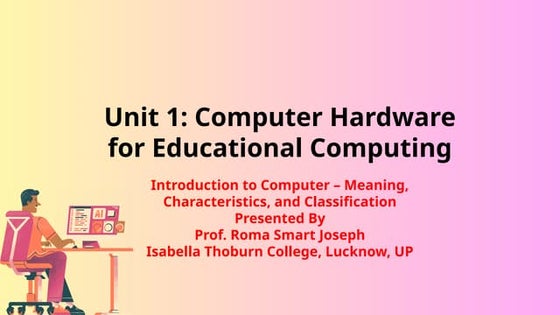



Unit 1 Computer Hardware for Educational Computing.pptxRomaSmart1
╠²
Computers have revolutionized various sectors, including education, by enhancing learning experiences and making information more accessible. This presentation, "Computer Hardware for Educational Computing," introduces the fundamental aspects of computers, including their definition, characteristics, classification, and significance in the educational domain. Understanding these concepts helps educators and students leverage technology for more effective learning.Entity Framework Interview Questions PDF By ScholarHat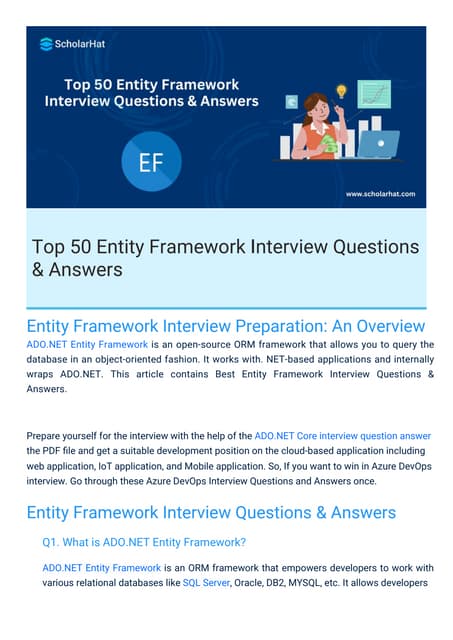



Entity Framework Interview Questions PDF By ScholarHatScholarhat
╠²
Entity Framework Interview Questions PDF By ScholarHatHelping Autistic Girls Shine Webinar ║▌║▌▀Żs



Helping Autistic Girls Shine Webinar ║▌║▌▀ŻsPooky Knightsmith
╠²
For more information about my speaking and training work, visit: https://www.pookyknightsmith.com/speaking/One Click RFQ Cancellation in Odoo 18 - Odoo ║▌║▌▀Żs



One Click RFQ Cancellation in Odoo 18 - Odoo ║▌║▌▀ŻsCeline George
╠²
In this slide, weŌĆÖll discuss the one click RFQ Cancellation in odoo 18. One-Click RFQ Cancellation in Odoo 18 is a feature that allows users to quickly and easily cancel Request for Quotations (RFQs) with a single click.BISNIS BERKAH BERANGKAT KE MEKKAH ISTIKMAL SYARIAH



BISNIS BERKAH BERANGKAT KE MEKKAH ISTIKMAL SYARIAHcoacharyasetiyaki
╠²
BISNIS BERKAH BERANGKAT KE MEKKAH ISTIKMAL SYARIAHMeeting the needs of modern students?, Selina McCoy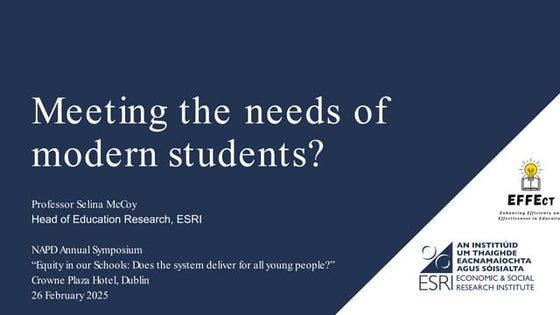



Meeting the needs of modern students?, Selina McCoyEconomic and Social Research Institute
╠²
NAPD Annual Symposium
ŌĆ£Equity in our Schools: Does the system deliver for all young people?ŌĆØFull-Stack .NET Developer Interview Questions PDF By ScholarHat



Full-Stack .NET Developer Interview Questions PDF By ScholarHatScholarhat
╠²
Full-Stack .NET Developer Interview Questions PDF By ScholarHatHow to create security group category in Odoo 17



How to create security group category in Odoo 17Celine George
╠²
This slide will represent the creation of security group category in odoo 17. Security groups are essential for managing user access and permissions across different modules. Creating a security group category helps to organize related user groups and streamline permission settings within a specific module or functionality.NUTRITIONAL ASSESSMENT AND EDUCATION - 5TH SEM.pdf



NUTRITIONAL ASSESSMENT AND EDUCATION - 5TH SEM.pdfDolisha Warbi
╠²
NUTRITIONAL ASSESSMENT AND EDUCATION, Introduction, definition, types - macronutrient and micronutrient, food pyramid, meal planning, nutritional assessment of individual, family and community by using appropriate method, nutrition education, nutritional rehabilitation, nutritional deficiency disorder, law/policies regarding nutrition in India, food hygiene, food fortification, food handling and storage, food preservation, food preparation, food purchase, food consumption, food borne diseases, food poisoningOdoo 18 Accounting Access Rights - Odoo 18 ║▌║▌▀Żs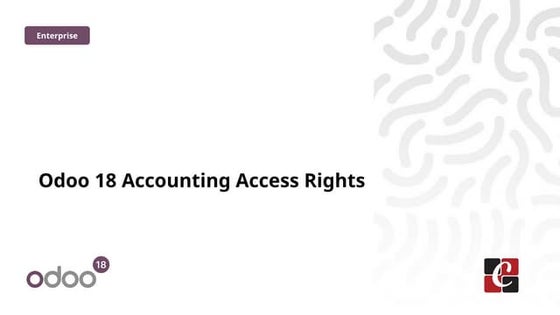



Odoo 18 Accounting Access Rights - Odoo 18 ║▌║▌▀ŻsCeline George
╠²
In this slide, weŌĆÖll discuss on accounting access rights in odoo 18. To ensure data security and maintain confidentiality, Odoo provides a robust access rights system that allows administrators to control who can access and modify accounting data. Determining Acceptable Evidences to Show Learners Understanding.pdf
- 1. Determining Acceptable Evidences to Show Learners' Understanding Bloom and Anderson's hierarchy of objectives of teaching is crucial in gauging students' understanding. Let's explore how to determine acceptable evidences at each cognitive level. by Ganesh Wagh
- 2. Introduction Bloom's Taxonomy Bloom's Taxonomy is a hierarchical framework that classifies educational goals based on students' ability to learn new material and use it effectively. Anderson's Hierarchy of Objectives of Teaching Anderson developed a revised version of Bloom's Taxonomy that included four knowledge dimensions, resulting in a comprehensive go-to reference for educators.
- 3. Remembering Multiple Choice Test Require learners to recall basic information quickly by answering multiple-choice questions. Flashcards Use flashcards to test learners' memory by asking them to recall definitions or key concepts. Fill in the Blank Exercises Test learners' ability to recall specific information by requiring them to complete sentences with the correct answer. Matching Activities Use matching activities to test learners' memory of pairs of terms or definitions.
- 4. Understanding 1 Reinforcement Instruction Let learners explain the topic in their own words to build a strong foundation of understanding. 2 Interpretation Exercises Encourage learners to interpret new information and make inferences based on this understanding. 3 Real-World Scenarios Present real-world scenarios and challenge learners to explain the material's applicability in these contexts.
- 5. Applying Laboratory Assignments Organize lab assignments that require learners to apply theoretical knowledge to real- world situations and contexts. Situation-Based Questions Challenge learners to apply critical thinking skills and creativity to develop new solutions in solving problems. Engineering Assignments Design projects that require learners to apply theoretical concepts to engineering solutions that can solve real- world challenges.
- 6. Analyzing 1 Critical Thinking Exercises Create exercises that challenge learners to evaluate the credibility of sources and apply critical thinking skills to navigate complex information. 2 Cause and Effect Activities Design cause and effect activities that require learners to recognize patterns and predict how they can impact real-world situations. 3 Peer Review Activities Encourage learners to review and provide feedback on other learners' work, building their analysis and critical evaluation skills.
- 7. Creating Collaborative Projects Organize group projects that require learners to collaborate on unique solutions to complex, real- world problems. Design Activities Encourage learners to design and develop new ideas, products, or technology based on the knowledge gained from the course.
- 8. Evaluating Essay Questions Develop essay questions that require learners to demonstrate a comprehensive understanding of a particular topic and how it can be applied in real- life situations. Case Studies Present case studies that engage learners in decision-making processes and require them to evaluate potential solutions and their implications. Portfolio Projects Encourage learners to develop portfolios that showcase their learning journey throughout the course and how they have achieved their objectives.
- 9. Conclusion Benefit of Bloom and Anderson's hierarchy of objectives of teaching Bloom and Anderson's hierarchy of objectives of teaching has a crucial role to play in providing valuable insights into learners' understanding and evaluating their progress in a structured manner. Takeaways What we have learned today will help us in developing teaching strategies that provide learners with the right set of challenges that match their cognitive and intellectual abilities.







